Chairman Kirk, Ranking Member Heitkamp, and Members of the Subcommittee, thank you for the opportunity to appear before you today. I am very pleased to offer my views, although I must emphasize that I represent only myself before you today. The Brookings Institution does not take any institutional positions on policy issues.
The January 2016 release of five Americans after months or even in some cases years of unjust imprisonment in Iran prompted celebrations and relief among many Americans and the rest of the world. Tehran’s detention of these individuals—including a Washington Post reporter, a Christian pastor, and a former U.S. Marine—as well as many, many other innocents underscores the threats to basic freedoms in Iran’s Islamic Republic.
That the detained Americans’ release was timed to coordinate with the settlement of a nearly forty-year-old financial dispute between the United States and Iran—and that this settlement included payments to Tehran that were transacted via the airlift of foreign currency—has prompted allegations that the Obama administration paid a “ransom” to Tehran.
The Payments Do Not Constitute Ransom
I would strongly assert that such charges have no basis. While the administration erred in initially suggesting that the settlement and the prisoner release were wholly unrelated, the facts of the case do not support the use of the word ‘ransom.’ A ransom is—by definition—“a payment made to secure the release of a detained person.” And yet, as William and Mary Law Professor Nancy Combs, who formerly represented the United States at the U.S.-Iran Claims Tribunal, emphasizes, the January 2016 transactions and subsequent related payments were “made to satisfy a legitimate debt that the U.S. owed to Iran.”1
Specifically, the payment derived from the legal framework established as part of the resolution of Iran’s 1979 seizure of the U.S. Embassy in Tehran, codified under the 1981 Algiers Accord. That Accord established the U.S.-Iran Claims Tribunal, which has since settled thousands of financial claims and helped spur the private settlement of many more. The Tribunal has worked to the benefit of U.S. individuals and corporations whose holdings in Iran were jeopardized or harmed as a result of the turmoil that led up to the revolution itself, the change in the government that ensued, and the subsequent rupture of diplomatic relations between Washington and Tehran.
Among the relatively small number of outstanding claims were those that related to the robust sales of arms and related military materiel to Iran’s pre-revolutionary government—a trade that approached $6 billion in 1977.2 As part of the Iran Foreign Military Sales program, payments were made into a trust fund to facilitate prompt and reliable compensation of U.S. contractors. In February 1979, after the collapse of Iran’s monarchy and the assumption of authority by Iran’s Provisional Government, Tehran immediately sought to end its security relationship with the United States. At that time, Washington and Tehran concluded a Memorandum of Understanding (MoU) that specified the FMS programs to be voided and halted payments, some of which had already been disrupted by revolutionary turmoil. Over the next several months, more than $10 billion in undelivered military sales were either cancelled by Tehran or reduced by the U.S. Department of Defense.3 The MoU also stipulated that all unexpended FMS payments should be deposited in an interest-bearing account established by Washington specifically for the purpose of accruing interest on the outstanding balance.4 After Iran’s November 1979 seizure of the U.S. Embassy and the detention of its personnel for what would become a 15-month ordeal, the remainder of Iran’s FMS Trust Fund was frozen by the Carter Administration, along with all other U.S.-based Iranian assets.
In 1982, Tehran filed a claim before the U.S.-Iran Claims Tribunal related to the FMS Trust Fund, which Lisa Grosh, Assistant Legal Advisor in the Office of International Claims and Investment Disputes at the U.S. Department of State, has described as “a giant breach of contract case covering 1,126 huge FMS contracts.”5 Over the ensuing decades, Grosh estimated that 40 rounds of formal negotiations between State Department lawyers and Iranian representatives aimed at resolving this claim took place, with some portions of the claim settled a number of years earlier.
Efforts to advance a resolution of the remaining FMS claims apparently intensified in recent years, and as with previous components of the claim, the expectation of hearings and a prospective judgment prompted efforts to reach a negotiated resolution that included a compromise on the amount of interest that Tehran was seeking. That settlement included a $1.3 billion total for accumulated interest, a figure that administration officials have said was considerably lower than Iran’s original claim. The original $400 million sum was paid from the FMS Trust Fund, whereas the $1.3 billion in interest was disbursed from the Judgment Fund, under the auspices of the U.S. Department of the Treasury.
As announced in January, the settlement “finally and fully resolves Iran’s claim for funds in the FMS Trust Fund” and the associated outstanding interest.6
To describe such a settlement as a ransom is simply not consistent with the well-established history of this claim and its arbitration over the course of several decades in a forum specifically designated for that purpose. Such a description also obscures the source and purpose of the payment, which provided Tehran with nothing other than its own funds.
Since the revelations about the arrangements surrounding the transfer of the $400 million, there has been an intense debate about its propriety, legality, and wisdom. However, insinuations that the payment or its modalities entailed a violation of existing sanctions laws are unfounded. In fact, it appears that the return of $400 million to Tehran as well as the subsequent transactions related to the $1.3 billion in interest, even in their unorthodox form, are consistent with the existing sanctions regime. The Iranian Transactions and Sanctions Regulations (ITSR) provide explicit authorization for licensing of transactions related to the resolution of disputes between the United States and Iran.7
We do not yet have complete information about processes and personnel engaged in the different channels of dialogue with Iran during the lead-up to the January 2016 settlement. However, the official remarks made by several U.S. officials with the Departments of State, Justice, and Treasury challenge the caricature presented by some media outlets of a simplistic transaction in which money was provided in explicit exchange for the release of imprisoned Americans. This episode appears to have involved a much more complex array of diplomatic interaction between the United States, the Islamic Republic, and several other countries and international institutions. The convergence of three distinct diplomatic channels in January 2016 surrounding the FMS claims, the prisoner release, and the certification of the implementation of the Joint Comprehensive Plan of Action does not, in and of itself, establish a direct linkage in their specific outcomes.
Finally, based on the information released publicly to date, the only clear linkage between the return of $400 million to Iran and the release of imprisoned Americans was the administration’s decision to halt the transaction until Tehran had complied with its commitments to free those who had been unjustly detained as well as several relatives. In other words, the transactions related to the FMS claim were utilized not as a carrot, but as a stick. It is difficult to imagine that anyone in this forum would have condoned the fulfillment of the settlement of the FMS claim in January had the Americans not been released.
U.S. Policy toward Iran and Economic Leverage
While the legal justification for treating the settlement and the January payment to Tehran as ransom is shaky or even nonexistent, the timing—in tandem the release of unjustly detained Americans—has clearly stoked the controversy. However, the Obama administration’s use of this settlement to help facilitate and/or expedite other Americans priorities with respect to Iranian behavior is neither unusual nor surprising.
Indeed, since the 1979 seizure of the U.S. embassy in Tehran, each American president has sought to utilize economic leverage—both penalties and incentives—as a central component of a strategy to address the challenges posed by revolutionary Iran. The U.S. policy framework was established in the earliest hours after the embassy staff was taken hostage. As a former senior State Department official recalled, “almost as soon as policy discussions began on [the day after the embassy was overrun], the members of the crisis team in both the White House and the State Department focused on a two-track strategy.” The objective then was to “open the door to negotiation” while also “increas[ing] the cost to Iran of holding the hostages.”
Since then, the U.S. formula for influencing Iran via a combination of pressure and incentives has remained fundamentally intact, and each U.S. administration, Republican and Democratic, has utilized the same toolbox, applying sanctions and other forms of economic pressure while also testing the possibilities of diplomatic dialogue and direct engagement with the Iranian government. Each iteration has varied, according to circumstances and presidential style, but the broad blueprint for American policy on Iran has proven remarkably consistent over the past 37 years.
This dual-track American approach toward the Islamic Republic has imparted a persistently transactional dimension to the interaction between Washington and Tehran. The formative skirmish between Washington and revolutionary Iran—when Iranian students seized the U.S. Embassy in Tehran and held its personnel as hostages for more than 15 months—ended only as part of a carefully crafted set of diplomatic and financial arrangements that included a coordinated release of the hostages in concert with the transfer of $7.956 billion in previously frozen Iranian overseas assets to an escrow account.
Since that time, Washington has utilized transactional diplomacy with Iran repeatedly, and notably with quite mixed results:
- President Ronald Reagan authorized the sale of arms to Tehran as part of the now-infamous Iran-contra scandal. This complicated and controversial exchange was premised on the President’s intense desire to elicit the freedom of American and other Western hostages in Lebanon, as well as the expectation among senior U.S. officials that a covert opening would strengthen opposition within the post-revolutionary system to Iran’s then supreme leader, Ayatollah Ruhollah Khomeini, and more broadly to the Islamic regime.
- President George H.W. Bush reached out to Tehran in his inaugural address, famously promising that goodwill begets goodwill, a During his presidency, Washington sought to make clear through multiple avenues that cooperation would be rewarded. After his inaugural rhetoric, Bush authorized multiple channels to reiterate his appeal for cooperation and specifically for assistance on the issue of Western hostages in Lebanon. This included the settlement of several outstanding financial claims in 1989, 1990, and 1991, as well as intensified efforts to compensate families of victims of the 1988 shooting down of an Iranian passenger plane by the USS Vincennes. Several of the settlements were timed to correspond to the release of American hostages, and while the Bush administration dismissed any linkage as “pure coincidence,” a senior State Department officials acknowledged at the time that “there was no doubt whatsoever that what we were doing was helping to aid Iran in the release of the hostages.”8
- President Bill Clinton undertook the most dramatic series of overtures toward Tehran since 1979 at the time, including a number of symbolic measures, broader sanctions reform, and the lifting of existing sanctions on caviar, carpets, and pistachios. That move came as part of a historic speech by then-Secretary of State Madeleine Albright, in which she announced the rescission and expressed formal regret on behalf of the U.S. government for America’s role in the bilateral estrangement and for specific past U.S. policies toward Tehran. These specific incentives were proffered in recognition of apparent shifts in Iran’s internal political dynamics—the election of a president and a majority of parliamentarians who openly advocated for political and social reform of the Islamic system. None of the Clinton-era overtures were coordinated in advance with Tehran, although U.S. officials predicted that the lifting of sanctions on caviar, carpets, and pistachios. would generate reciprocal Iranian moves.9
- President George W. Bush also utilized incentives as a means of seeking to induce Iran to modify its most problematic policies. While the Bush administration initially resisted European diplomacy on the nuclear issue, U.S. officials gradually accepted that a direct American role in that dialogue would offer greater leverage in dealing with the issue. In an attempt to provide incentives for Iranian cooperation on the nuclear talks, in May 2005, Washington dropped its objections to Iran’s application to begin accession talks with the World Trade Organization and announced that it would consider licensing sales of spare parts for aircraft on a case-by-case basis.
Notably, the January 2016 settlement was not the first such use of the body of claims associated with the U.S.-Iran Claims Tribunal as a means of incentivizing Iranian cooperation. In none of these cases did Tehran receive undue benefit as a result of the discharge of specific claims. Most analyses of the Algiers Accords have indicated the ultimate resolution of that tragic episode can be considered favorable to American interests, viewed broadly, and to American financial claims more specifically.10
Roberts B. Owen, the State Department legal adviser who helped craft the settlement, explained that “we gave away nothing of value that was ours; we simply returned a relatively small part of what was theirs…”11 And with respect to later actions at the Tribunal and the diplomatic aspirations attached to them, Abraham D. Sofaer, who served as State Department legal advisor from 1985-1990, underscored that these settlements should not be interpreted as confirmation that “the United States was negotiating a settlement for hostages or that anyone is giving them more money than they deserve.”12
In this sense, the Obama administration’s decision to coordinate the resolution of the outstanding claim with the release of the Americans in January is perfectly consistent with the approach undertaken by each of its predecessors.
There are several broad points about the use of economic leverage and transactional diplomacy in influencing Iran’s regional and domestic policies:
- It is important to emphasize that throughout the past 37 years, the various endeavors in transactional diplomacy by each U.S. administration did not preclude the intensification of sanctions or the use of military force and other coercive measures against Iranian actors or their proxies in the region. These are not mutually exclusive policy approaches.
- It should also not be forgotten that the Iranians themselves frequently view diplomacy explicitly in transactional. This was particularly acute throughout the long history of the nuclear negotiations; Iran approached the talks from 2003 onward with the expectation of a reciprocal—and at least equivalent—exchange. Understandably, Iran’s long pattern of deception and transgressions meant that Washington and its European partners saw no such equivalence. The very efficacy of sanctions and Iran’s internal debate surrounding the negotiations and the deal only exacerbated this disconnect. The painful toll of sanctions and the hyperbole deployed to gain elite and popular buy-in for the nuclear agreement has upped the ante in Tehran.
- Finally, as the historical anecdotes cited here suggest, the use of incentives as bargaining chips in negotiations has demonstrated a relatively mixed track record. Proffering sanctions relief incrementally—either in retrospective fashion, to reward constructive policy shifts or prospectively to encourage the same—has typically failed to generate the intended results. The long history of utilizing economic pressure suggests that the use of sanctions relief as an incentive often entails missed cues for both the sanctioning state and the target state. In past efforts to use sanctions relief to encourage changes in Iranian policies, Washington has overestimated the value of its hand, while Tehran has persistently undervalued any incentives put on offer.
Diplomacy Ultimately Advances American Interests
Many have questioned the advisability of resolving the outstanding pre-revolutionary FMS claim at this time. However, further delay in a settlement would not have obviated its eventual conclusion, and State Department lawyers have insisted that the Tribunal’s decision in this particular claim might have resulted in a higher judgment if a compromise had not been reached between U.S. and Iranian officials.13 Such an assessment is reasonable and consistent with the position articulated seven years earlier, by John B. Bellinger III, State Department legal advisor during the George W. Bush administration. Bellinger argued that the United States would benefit from an expeditious resolution of all the remainder of the Iranian claims before the Tribunal, precisely because judgments in outstanding cases could entail such significant payments to Tehran.14
In addition, it is hardly surprising that the mechanics of these payments – via wire transfers to European financial institutions that were then converted to cash and airlifted to Tehran – have generated concern and controversy. The relevant U.S. officials who approved this transaction have yet to fully explain the rationale for what appears to be a deviation from prior practices of financial transfer to Tehran. The unusual mechanism of the payments warrants further clarification, in a closed setting if necessary.
However, had the manner of payment differed, it is not clear to me that the outcome would be manifestly different from the perspective of U.S. interests. If the payments had been effected fully by wire transfer rather than the headline-grabbing “pallets of cash,” the ultimate beneficiary would have been the same. And, once the settlement was effected, Washington would have had no greater capacity to constrain Tehran’s ability to utilize these funds for its own purposes, irrespective of the mode of payment.
Unease among the general public and here in Congress about the wisdom of expanding the coffers of one of the world’s worst actors is perfectly reasonable. And it cannot be fully, or even significantly, assuaged by the assurances of State Department officials that Tehran is likely to use these funds for “critical economic needs.”15 There can be no doubt in the existence and even the urgency of domestic economic priorities for Iran’s leadership; after years of debilitating sanctions and domestic mismanagement, economic rehabilitation ranks at the top of Tehran’s agenda. Iranians are eager to see the ‘peace dividend’—jobs, opportunities, and growth—that they have been promised for years. Unfortunately, these priorities do not negate the possibility, even the likelihood, that Tehran will utilize some or all of the funds provided as a result of this transaction for more destabilizing purposes: arms procurement, support for regional proxies, and other malign activities.
Still, the long-term track record is clear: neither Iran’s support for terrorism nor the development of its nuclear and missile programs have been driven primarily or even substantially by resource availability. In fact, Iran’s most destructive regional policies have been undertaken and sustained even at times of epic constraints. Economic pressures—whether related to sanctions or declines in oil prices—did not produce corresponding abatements in Iran’s efforts to extend its influence through nefarious activities and allies, its substantial investment in fueling conflicts in Iraq and Syria, or its illicit nuclear program.
For the same reasons, it is unlikely that the repayment of a prolonged pre-revolutionary financial claim will manifestly exacerbate these policies. And the continuing U.S. capacity to isolate those entities and individuals within Iran who remain engaged in terrorist activities will be crucial to shaping the decisions of its leadership and the trajectory of its economic recovery.
It is understandably galling to settle a debt that provides a benefit to a regime that remains a fundamentally dangerous actor within the region and toward its own citizenry. However, a discomfiting reality of the international system is that the United States has and must engage with a variety of governments whose interests conflict with its own, occasionally in ways that work to the immediate advantage of hostile actors. That the United States upholds its obligations, even in dealing with regimes that routinely violate such norms, is neither objectionable nor worthy of censure.
Americans interests have always been best defended and advanced by bolstering the rules and institutions of the liberal international order. While it is unfortunate that Tehran has benefited from this transaction, the tradeoffs here, and in the broader intensification of diplomatic engagement with Iran including the conclusion of the comprehensive nuclear deal, meaningfully advance U.S. national security by deferring Iran’s pathway to nuclear weapons capability.
In the same vein, it is deeply short-sighted to view the settlement of a largely forgotten financial dispute with Iran’s post-revolutionary government as a consequential victory for the Iranian leadership or their attachment to objectionable policies. The price that Iran has paid—and will continue to pay—for its recalcitrance on the nuclear issue, its support for terrorism and destabilizing actions around the region, and its treatment of its own citizens vastly outstrips the compensation that is the subject of this hearing.
Addressing the Unjust Detention of Americans and Other Dual Nationals in Iran
Several critics of the Obama administration and the handling of this episode have warned that the linkage between the financial settlement and the release of detained Americans in January may exacerbate the risks to American citizens in countries such as Iran. The theory seems to be that Tehran will see financial incentives in the seizure and bartering of American lives, and thus engage in additional spurious arrests, imprisonment, and/or harassment of dual nationals in hopes of eliciting additional financial benefits.
I understand why such inferences have been drawn and I appreciate the appeal of imputing some kind of rational calculus to Iran’s treatment of dual nationals. Unfortunately, however, in my view this reflects a naïve and inaccurate assessment of the drivers of Iranian politics and policy. I simply see no evidence that Iran’s longstanding patterns of human rights abuses, inadequate rule of law, and exploitation of individuals to advance ideological narrative are subject to the logic of financial incentives.
Even after the prisoner release in January, Americans remain missing and unjustly detained in Iran: first and foremost, Robert Levinson, a retired U.S. government employee missing since a 2007 trip to Iran’s Kish Island. Also: my good friend Siamak Namazi, an Iranian-American entrepreneur and analyst whose interest in Iran’s development has always been paramount; his 80-year-old father Baqr Namazi, a long-time United Nations diplomat; Robin Shahini, who was visiting his sick mother in Iran when he was arrested earlier this year; and U.S. permanent resident Nizar Zakka, who attended a conference in Tehran as part of his work on information technology issues for a U.S. government contractor.
Add to that list an array of others: Canadian academic Homa Hoodfar; British NGO staffer Nazanin Zaghari-Ratcliffe, whose two-year-old daughter has been stranded in Iran as a result of her detention; and many more British, French, and Canadian citizens. These names are just the tip of the iceberg; press reports have suggested that other cases have been deliberately suppressed in hopes of a quiet resolution.16
Washington must pay particular attention whenever one of our own is seized in the sole country on earth where the United States has no direct diplomatic presence. When an Iranian-American is seized by the Islamic system, the world’s sole superpower is forced to fall back on the least satisfying instruments of diplomatic influence: eloquent statements from the podium, third-party consular inquiries, and quiet efforts through cooperative interlocutors.
And in this search for responses, there tends to be an almost irresistible pursuit of an explanation. Why was this individual seized at this particular moment in time? What message are Iranian authorities trying to send with this arrest? The conventional wisdom often searches for explanations in Iran’s fierce factionalized struggle, while some now wonder if Tehran will see individual dual nationals as a ready source of leverage in eliciting financial benefits.
All these theories are perfectly reasonable. However, any attempt at surmising intent from the actions of a repressive government tends to over-intellectualize. In these arrests, I would assert that there is no hidden message, no method to the madness other than obnoxious realities of authoritarian power. The reality is that there is only one factor that drives the detention and seizure of Americans and other dual nationals. The Islamic Republic’s foundational moments have internalized a combination of deep-seated paranoia toward external actors and state together with a readiness to utilize official and semi-official violence against individuals within the DNA of the Iranian state and its leadership. What the esteemed historian Ervand Abrahamian has described as the “paranoid style of Iranian politics” has deep roots and broad appeal within today’s Iran.17
For Tehran, jailing Americans has never been never motivated by the prospect of a payoff. Rather, the center of gravity within Iran’s ruling elite remains convinced that there is an American-led conspiracy of regime change, facilitated by dual nationals such as those who were arrested.
Finally, it is essential to understand the broad context of Iranian behavior. The history of the Islamic Republic has only rarely recorded cases in which the leadership of this state serviced Iran’s economic interests as its foremost priority. The notion that the January 2016 settlement will provoke a new wave of harassment or detention fails to appreciate how routinely Tehran has acted against its own economic betterment, or how modest the recent settlement is within the overall financial flows and assets available to the Islamic Republic.
And this presumption fails to account for the relative durability of these patterns of behavior in Iran. The arrest of innocents and the routine violation of human rights in Iran are a function of this ruling system. Despite the sophistication of its society, the vibrancy of its debates, the trappings of competitive and representative politics, at the heart of the Islamic Republic is a police state. If its agents want to grab you, they can and they will and they need no excuse. Multiple intelligence and security organizations control a prison system whose reaches are not known to even its parliament and whose abuses are infamous. No one, not the most innocuous Western tourist or the most well-connected Iranian power-broker, is immune to its reach.
Conclusion
Despite the administration’s careful, almost reflexive hedging, the public campaign to win support for the nuclear deal relied upon an expectation that the agreement both evidenced and advanced a nascent process of political change within Iran. The July 2015 conclusion of the JCPOA and its subsequent implementation seemed to validate the administration’s underlying presumption that Iran’s leaders could be persuaded to alter their most dangerous policies. As a result, what was once mostly hypothetical—the proposition that Iran can be moderated—seems temptingly inevitable.
However, as the ensuing months demonstrated, the end of the negotiations themselves did not bring about any durable conclusion to the controversy over Iran’s nuclear program, nor did it usher in anything like a denouement in the Islamic Republic’s most destabilizing policies. For this reason, it is tempting to view Tehran’s continued harassment and detention of Americans, other foreign travelers, and Iranian citizens, along with a host of other abuses and dangerous policies, as an indictment of the Obama administration’s approach to Iran.
And yet the rewards of diplomacy with the Islamic Republic, while as yet limited, should not be dismissed out of hand. Tehran’s prospective pathway to nuclear weapons capability has been extended significantly for at least a decade, and the most onerous inspections and verifications regime in the history of the nuclear nonproliferation regime has been erected to ensure this. Five Americans were able to leave the confines of Iran’s most notorious prison and are with their families today. And it is possible to see in other developments, such as Tehran’s recent efforts to demonstrate compliance with multilateral counterterror financing requirements,18 as evidence of a creeping recognition among the Iranian leadership that meaningful rehabilitation on the world stage requires adherence to the norms of the international system. That is not an end, but it is a beginning, and after 37 years of frustrated and largely unsuccessful American efforts to moderate Iran’s most dangerous policies, it is a welcome beginning.
I thank you for the opportunity to testify here today and look forward to the Committee’s questions.
-
Footnotes
- Lauren Carroll, “Donald Trump’s Mostly False claim that $400 million payment to Iran was ‘ransom,’” Politifact, August 24, 2016, http://www.politifact.com/truth-o-meter/statements/2016/aug/24/donald-trump/donald-trump-calls-400-million-payment-iran-ransom/
- Kate Gillespie, “US Corporations and Iran at the Hague,” Middle East Journal 44:1 (Winter, 1990), p. 18-36.
- “Financial and Legal Implications of Iran’s Cancellation of Arms Purchase Agreements,” U.S. General Accounting Office, July 25, 1979, US GAO 109986, http://www.iranwatch.org/sites/default/files/us-gao-cancellationagreement-072579.pdf
- The United States of America and Iran Memorandum of Understanding Concerning the Revisions of Foreign Military Sales (FMS) Letters of Offer and Acceptance, February 3, 1979, https://treaties.un.org/doc/Publication/UNTS/Volume%201168/volume-1168-I-18582-English.pdf
- Lisa Grosh, Assistant Legal Advisor, Office of International Claims and Investment Disputes, U.S. Department of State, testifying before the Subcommittee on Oversight and Investigations, Committee on Financial Services, U.S. House of Representatives, “Fueling Terror: The Dangers of Ransom Payments to Iran,” September 8, 2016, http://financialservices.house.gov/calendar/eventsingle.aspx?EventID=400971
- Grosh, September 8, 2016, http://financialservices.house.gov/calendar/eventsingle.aspx?EventID=400971
- Department of the Treasury Foreign Assets Control Office 31 CFR Part 560 Iranian Transactions Regulations; Final Rule, Federal Register 77:204, October 22, 2012, https://www.treasury.gov/resource-center/sanctions/Programs/Documents/fr77_64664.pdf
- Elaine Sciolino, “U.S. Near Deal To Settle Claims By the Iranians,” New York Times, November 21, 1991. http://www.nytimes.com/1991/11/21/world/us-near-deal-to-settle-claims-by-the-iranians.html See also Elaine Sciolino, “Bush Hopes to Settle Iranian Assets Issue,” New York Times, November 8, 1989.
- Phillip Shenon, “Major Overture toward Iran Expected in Speech by Albright,” New York Times, March 17, 2000, http://www.nytimes.com/2000/03/17/world/major-overture-toward-iran-expected-in-speech-by-albright.html
- Warren Christopher and Richard M. Mosk. “The Iranian Hostage Crisis and the Iran-U.S. Claims Tribunal: Implications for International Dispute Resolution and Diplomacy.” Pepperdine Dispute Resolution Law Journal 7:2 (2007): 165–76.
- Roberts B. Owen, “The Final Negotiation and Release in Algiers,” in Warren Christopher et al., American Hostages in Iran: The Conduct of a Crisis (New Haven: Yale University Press, 1985), p. 324.
- Sciolino, NYT, November 21, 1991.
- Grosh, September 8, 2016, http://financialservices.house.gov/calendar/eventsingle.aspx?EventID=400971
- John B. Bellinger III, “The Iran talks we should stop: an outmoded U.S.-Iran Claims Tribunal,” The Washington Post, October 22, 2009, http://www.washingtonpost.com/wp-dyn/content/article/2009/10/21/AR2009102103222.html; Bellinger, “U.S. Settlement of Iran Claims Tribunal Claim was Prudent but Possible Linkage to Release of Americans Is Regrettable,” Lawfare, January 18, 2016, https://www.lawfareblog.com/us-settlement-iran-claims-tribunal-claim-was-prudent-possible-linkage-release-americans-regrettable
- Chris Backemeyer, Deputy Assistant Secretary of State, Bureau of Near East Affairs, U.S. Department of State, , testifying before the Subcommittee on Oversight and Investigations, Committee on Financial Services, U.S. House of Representatives, “Fueling Terror: The Dangers of Ransom Payments to Iran,” September 8, 2016, http://financialservices.house.gov/calendar/eventsingle.aspx?EventID=400971
- Carol Morello, “Relatives of Western prisoners in Tehran try to lobby Iranian president at the U.N.,” The Washington Post, September 20, 2016, https://www.washingtonpost.com/world/national-security/relatives-of-western-prisoners-in-tehran-try-to-lobby-iranian-president-at-the-un/2016/09/20/4bb7c4cd-c4ee-4807-8809-66228e9c7283_story.html
- Ervand Abrahamian, Khomeinism: Essays on the Islamic Republic (University of California Press, 1993); see also Abrahamian, “The Paranoid Style of Iranian Politics,” Frontline: Tehran Bureau, August 27, 2009, http://www.pbs.org/wgbh/pages/frontline/tehranbureau/2009/08/the-paranoid-style-in-iranian-politics.html
- Najmeh Bozorgmehr, “Iranian Banks Give Revolutionary Guards the Cold Shoulder,” The Financial Times, September 18, 2016, http://www.ft.com/cms/s/0/1eb9e41a-7b16-11e6-ae24-f193b105145e.html#axzz4KtH3QCE3

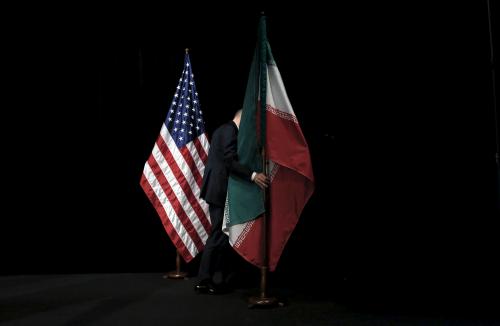
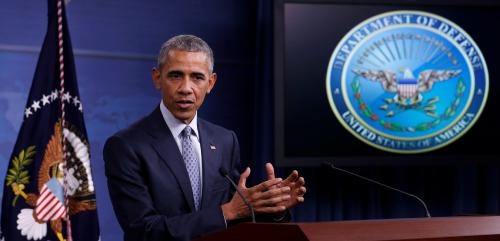
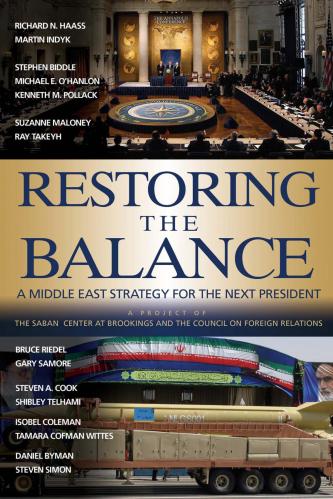
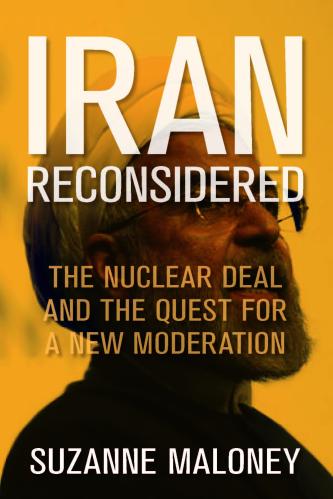
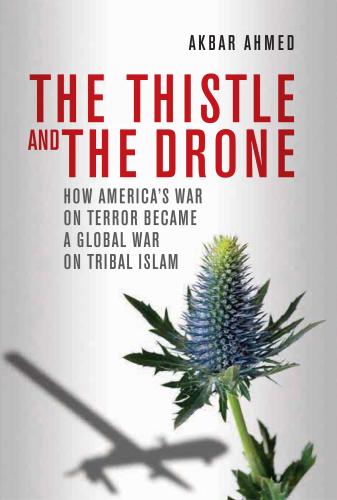

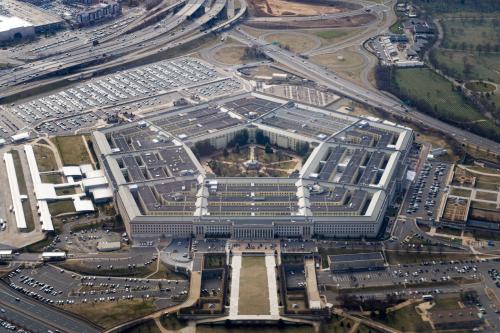
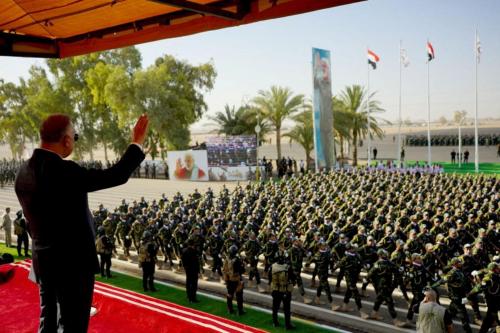

Commentary
TestimonyThe terror financing risks of America’s $400 million cash payment to Iran
September 21, 2016
Suzanne Maloney testifies before the Senate Subcommittee on National Security and International Trade and Finance on the United States’ use of cash payments as economic leverage over Iran. Watch the live webcast here or read the full testimony below.